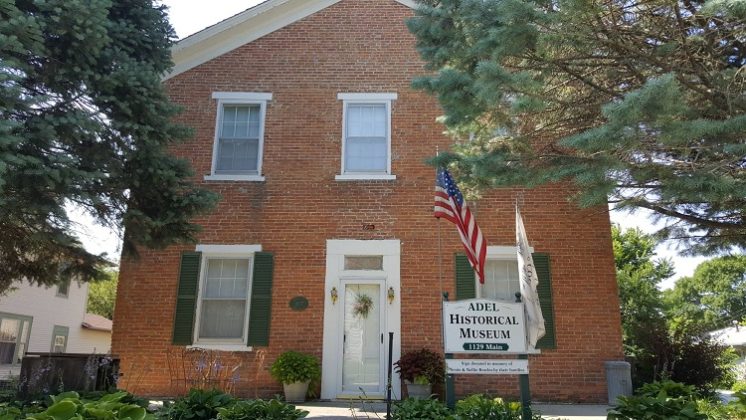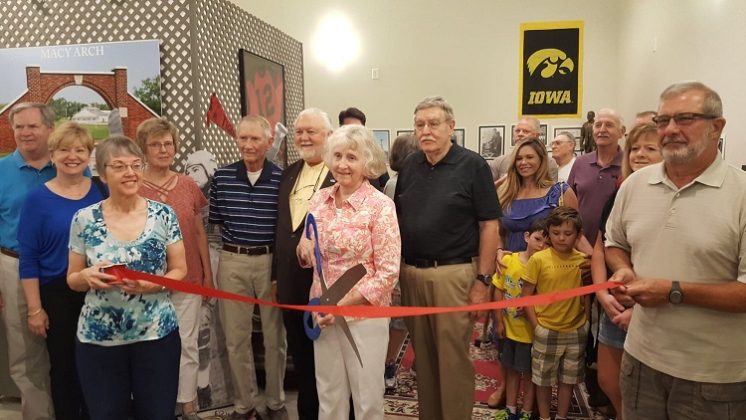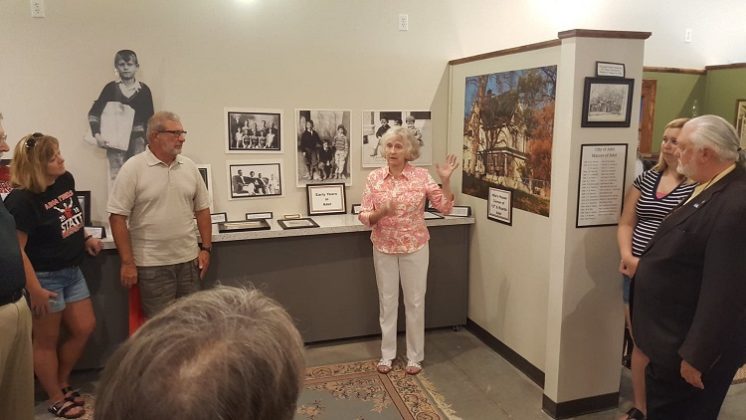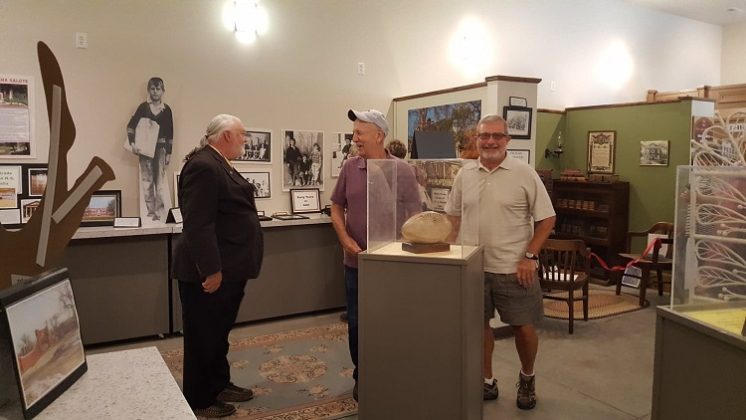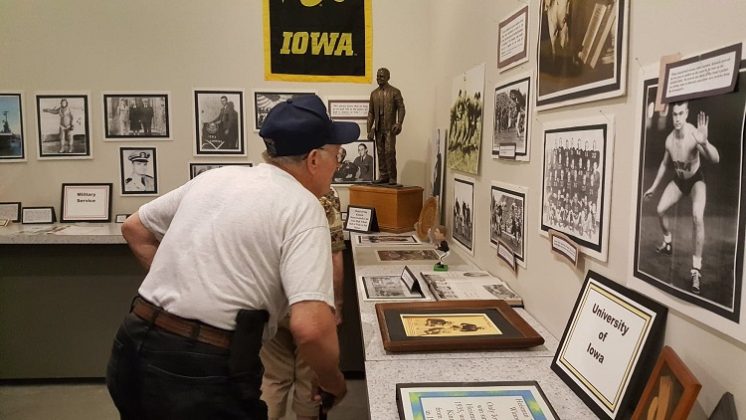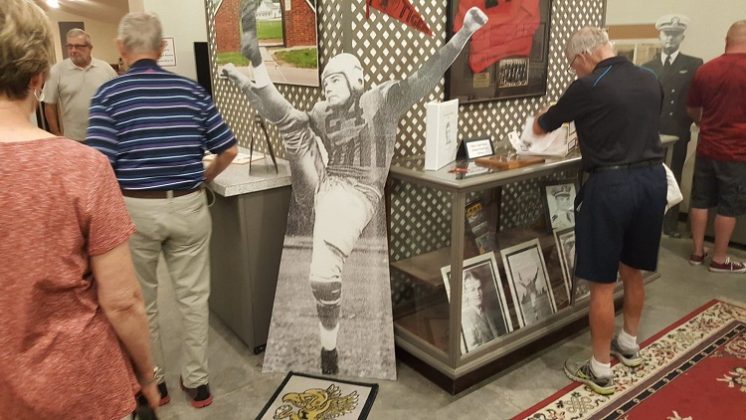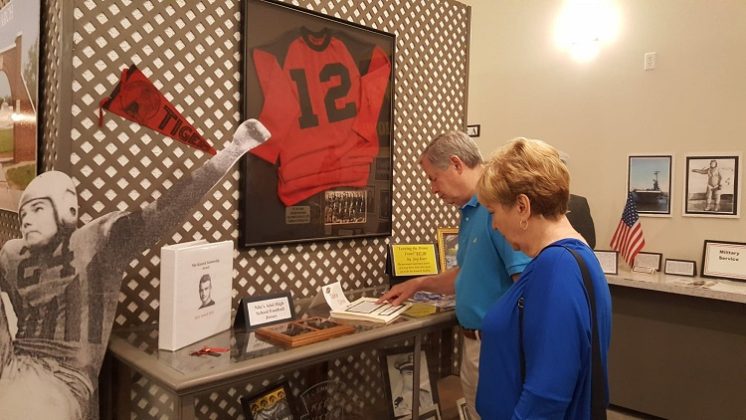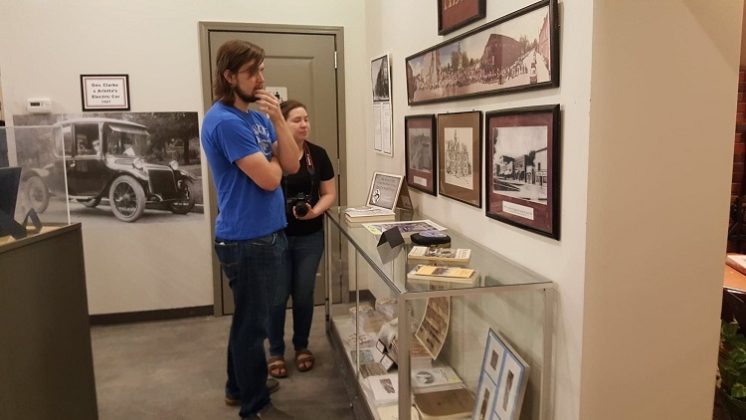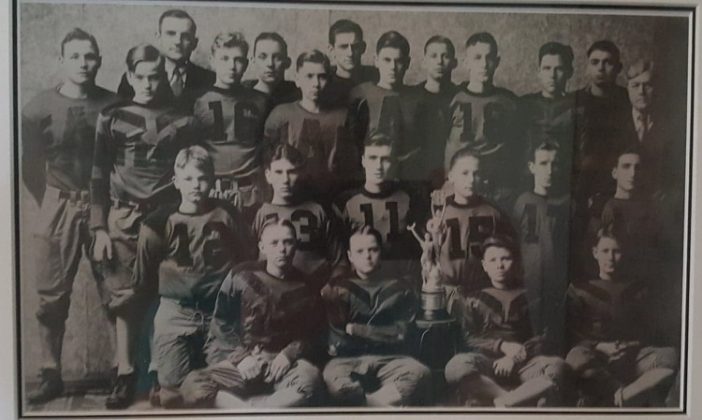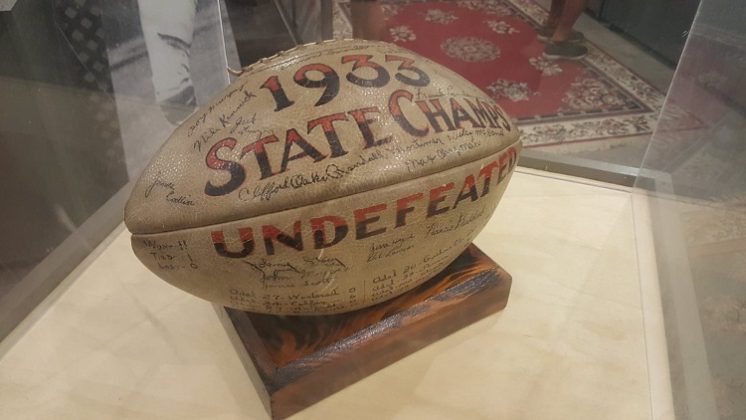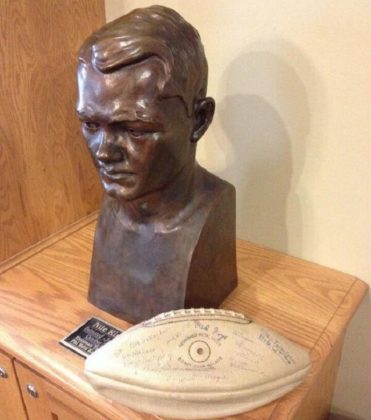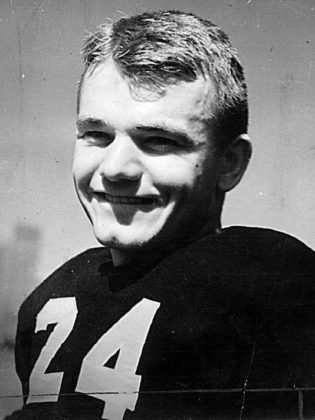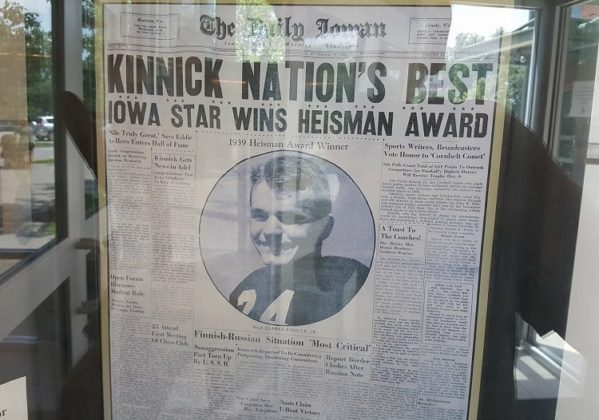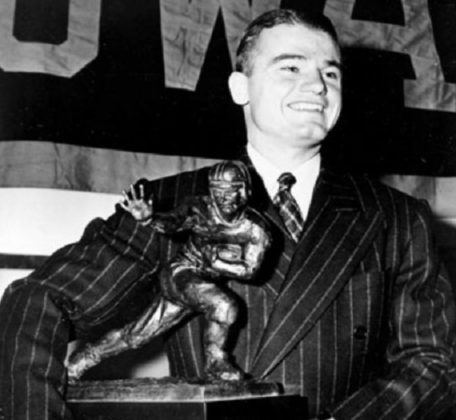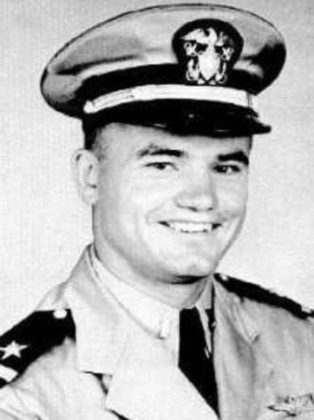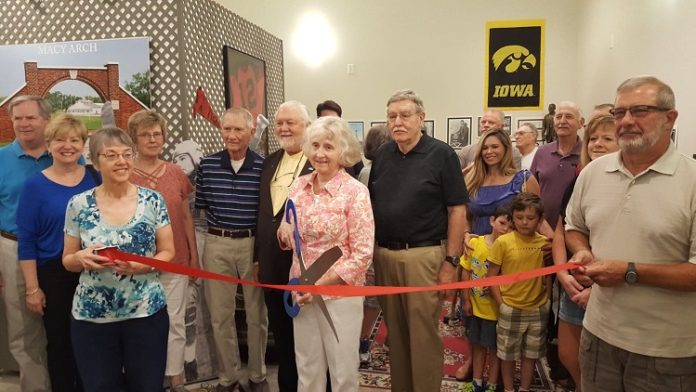
The 100th anniversay of the birth of 1939 Heisman Trophy winner and First-Team All-American Nile Kinnick of Adel was celebrated Saturday with honors showered on the city’s native son and tributes coming in from Iowa City and elsewhere.
A private ribbon-cutting ceremony was held for some 30 donors to the Kinnick Addition to the Adel Historical Museum, with Museum Director Jan Price snipping the riband and thanking the supporters for their faithfulness in raising $127,000 for the addition and other improvements to the 161-year-old building.
Public festivities followed, involving local celebrants and visitors from FRYfest, Coralville’s annual celebration of all things Hawkeye, as well as Herky the Hawkeye, Cedar Rapids author Tom Lidd, author of the book, “Nile,” and Joe Heath, producer of the upcoming movie, “The Ironmen.” A rarely seen bust of Kinnick was also exhibited at the community gathering.
“This is a Clarke-Kinnick Museum,” Price told to the gathered donors, “and the reason being that Gov. Clarke was a two-term Republican governor, and he lived here in Adel most of his life. He was the beginning of what happened down at this end. He was the grandfather of Nile Kinnick, and he had a lot to do with the kind of person that Nile turned out to be.”
Kinnick’s story is a familiar one. He was a hero in the romantic mold, dying a warrior’s death in the beauty of youth and with boundless potential and almost limitless possibilities before him. His athletic prowess was matched by the brightest prospects for a career in politics in Depression-era America.
He was perfectly placed. Along with his family connections — he was the grandson of George Washington Clarke of Adel, who served as Iowa’s 21 governor from 1913 to 1917 — Kinnick’s Heisman fame allowed him to make a series of virtual campaign speeches around the country.
A hint of what the future might have held was glimpsed in a speech Kinnick delivered before the Young Republicans in introducing Wendell Wilkie, the Indiana businessman who unsuccessfully challenged U.S. President Franklin D. Roosevelt in 1940.
Kinnick told the Young Republicans, “When the members of any nation have come to regard their country as nothing more than the plot of ground on which they reside and their government as a mere organization for providing police or contracting treaties, when they have ceased to entertain any warmer feelings for one another than those which interest or personal friendship or a mere general philanthropy may produce, the moral dissolution of that nation is at hand.”
Sadly, Kinnick’s own physical dissolution was even nearer at hand. His studies at the University of Iowa College of Law were interrupted by his fateful enlistment into the U.S. Naval Air Reserve only three days before the Japanese bombing of the U.S. Navy’s Pacific Fleet at Pearl Harbor, Hawaii, Dec. 7, 1941.
Lord Raglan in “The Hero” calculated that it takes about 150 years after the death of a great man before mythical elements start to cluster around the story of his life. Alexander the Great, for instance, whose empire at his death in 323 stretched from the Adriatic Sea to the Indus River, was by 475 claimed to be a son of the Egyptian god Ammon, and tales of his encounters with mythical creatures such as sirens or centaurs were widely believed.
Kinnick has been gone only 75 years, so the facts about his life remain down to earth and can be reviewed at the extensive new exhibition at the Adel Historical Museum at 1129 Main St. in Adel. Visitors can arrange a tour by calling 515-993-1032.





